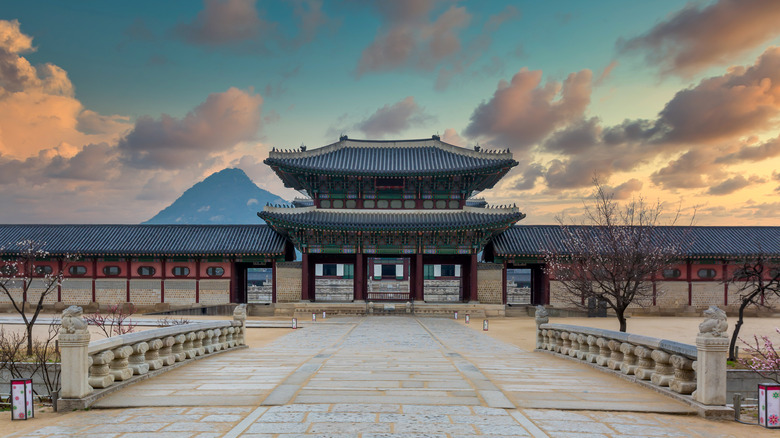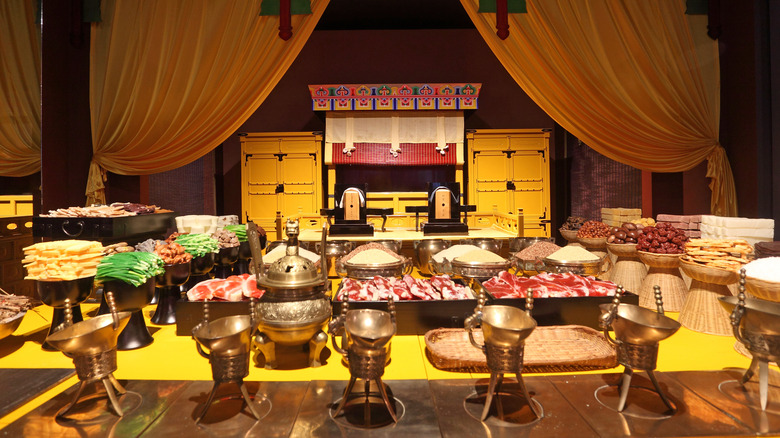The Birthday Feast Korean Royals Ate During The Joseon Dynasty
Korean culture is undeniably unique, and one of the most interesting differences between this nation and other countries revolves around birthday celebrations. For instance, in South Korea, your age is typically one year older than your international age. According to 90 Day Korean, this comes down to two factors. One, when you are born, you are automatically considered one year old, as it accounts for the time you spent in the womb. Secondly, everyone's age advances one year on January 1, despite your actual birthday.
Korea also doesn't partake in indulging in a ton of sweet treats to celebrate growing a year older. Rather, seaweed soup is commonly enjoyed on a birthday, which was started during the Goryeo dynasty, according to The Krew. Per Khan Academy, the Goryeo dynasty (918 to 1392) saw an enormous amount of cultural growth, as did the following dynasty, Joseon (1392 to 1910). Although, as with many countries, the nation's nobility often partake in more extravagant cuisines for their birthday celebrations than the commoners, and the Joseon dynasty royalty was no exception.
Korean royals had no dessert shortage
Korean royals during this period saw grand affairs thrown together for birthdays. According to the Intangible Cultural Heritage Courier, these banquets would cost around $980,000 in today's money and were purposefully extravagant to demonstrate the ruler's authority, per the article. According to research published in the Journal of Ethnic Foods, royals at the time faced no shortage of celebratory dishes and were presented with various staple foods. The menu included plenty of noodle and dumpling dishes for the main course, while side dishes consisted of anything from soup, pancakes, sashimi, poached eggs, and more.
However, one surprise that came out of the paper's findings was the number of desserts present. The authors note that a wide range of rice cakes and traditional sweets show that these desserts were highly developed and viewed as very important in the royal palace. The list included many steamed rice cake types and traditional Korean sweets, including oil and honey pastries, gangjeong, tea confectionery, fruits, and more. The drinks were just as plentiful as the dining options. Punches, like hawthorn berry persimmon and saengnisuk, a honey beverage, flowed generously.
Intangible Cultural Heritage Courier notes that visitors to Seoul today can take part in reenactments of 19th-century royal banquets in the famed Gyeongbokgung Palace. These events give context for how royals lived at the time and keep the public interested in historical events. So if you're a self-proclaimed foodie, travel enthusiast, or history buff, it may be worth a trip.

